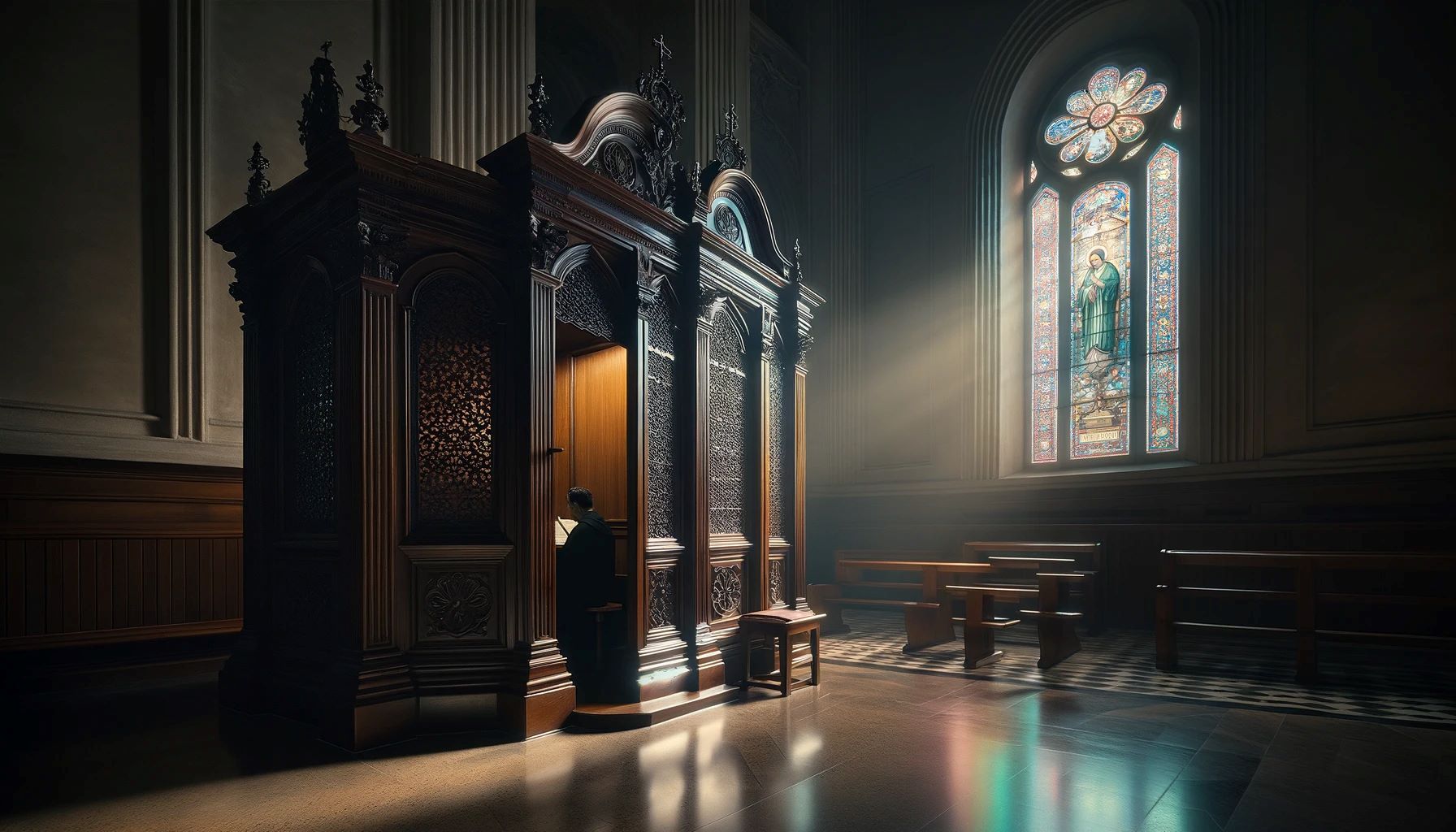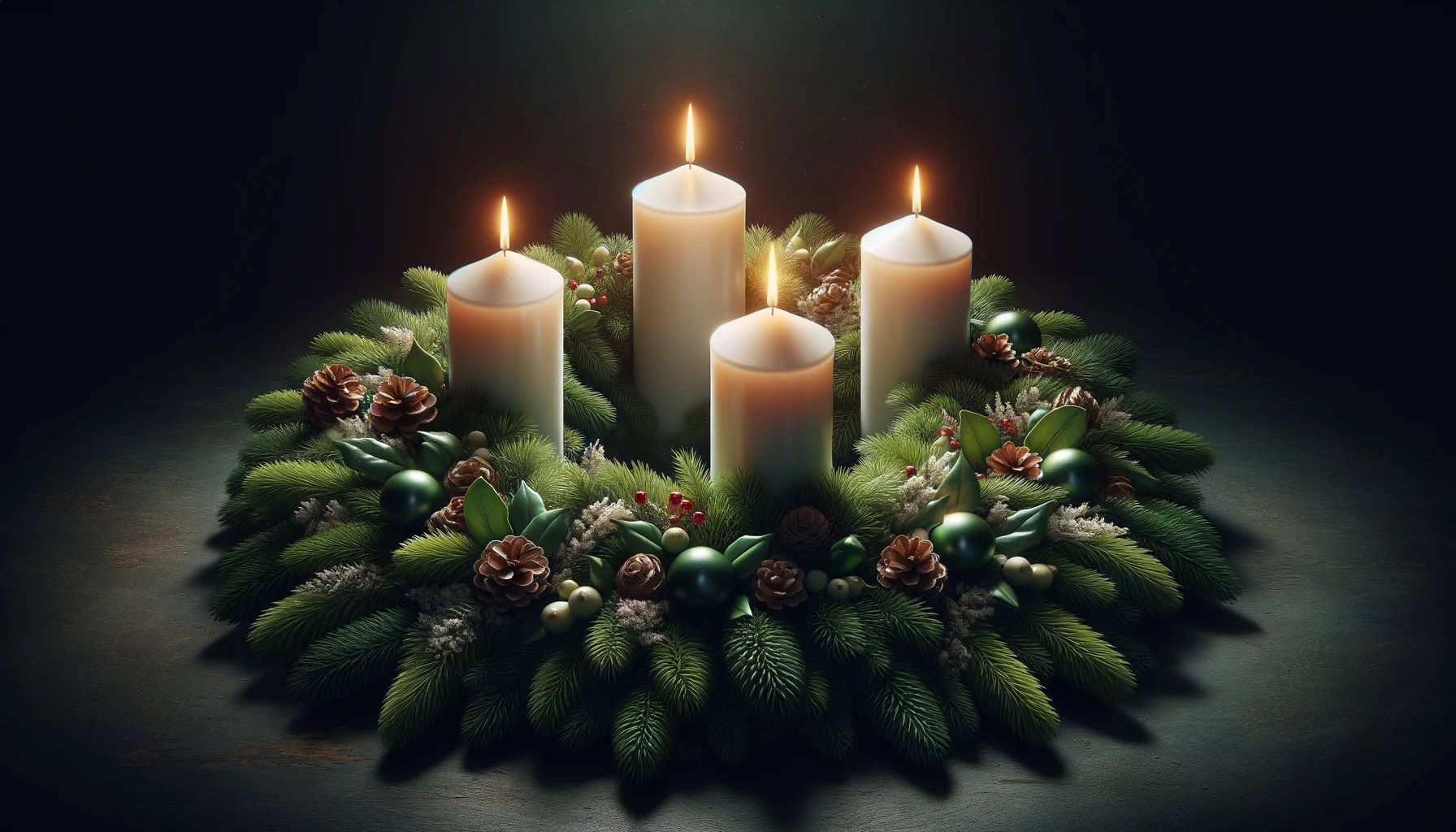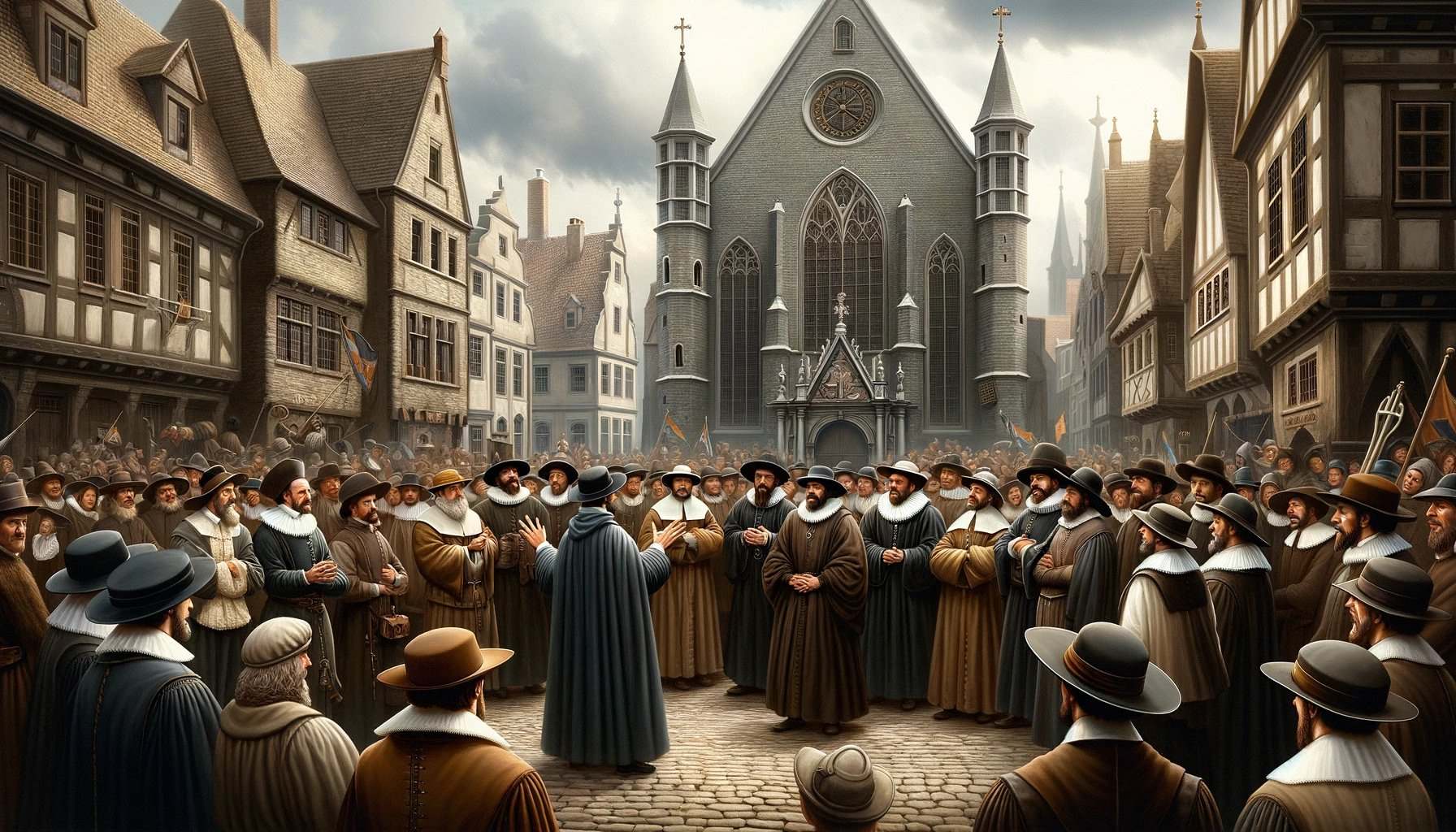Home>Special Themes>What Do Catholics Do For Advent


Special Themes
What Do Catholics Do For Advent
Published: February 12, 2024
Ericka Andersen, an editor at Christian.net, expertly merges digital strategy with content creation, focusing on faith and societal issues. Her communication skills enhance the platform's engaging narratives, fostering meaningful dialogue on belief's impact on society.
Discover what Catholics do to prepare for Christmas during Advent. Explore the special themes, traditions, and customs observed during this sacred season.
(Many of the links in this article redirect to a specific reviewed product. Your purchase of these products through affiliate links helps to generate commission for Christian.net, at no extra cost. Learn more)
Table of Contents
Introduction
Advent is a significant time of spiritual preparation and anticipation for Catholics around the world. It marks the beginning of the liturgical year and is a period of joyful expectation as the faithful prepare to celebrate the birth of Jesus Christ at Christmas. The word "Advent" is derived from the Latin word "adventus," meaning "coming" or "arrival," and it encompasses the dual nature of the season: looking back to the first coming of Jesus as a baby in Bethlehem and looking forward to his promised return.
During Advent, Catholics engage in various spiritual practices and traditions that deepen their faith and foster a sense of hope and anticipation. These practices include the lighting of Advent wreaths, special prayers and readings, fasting and abstinence, and engaging in meaningful activities through Advent calendars. Each of these elements contributes to the rich tapestry of Advent observance, guiding Catholics on a journey of spiritual reflection and preparation for the celebration of the Nativity of Jesus.
As we delve into the multifaceted aspects of Advent in the Catholic Church, we will explore the profound significance of this season and the various ways in which Catholics engage in spiritual disciplines and communal traditions. From the symbolism of the Advent wreath to the solemnity of special prayers and readings, each element of Advent serves to enrich the faithful's spiritual experience and draw them closer to the heart of the Christmas message. Let us embark on this enlightening exploration of Advent, delving into its rich traditions and practices that inspire faith, hope, and joyful anticipation.
The Meaning of Advent in the Catholic Church
Advent holds profound significance in the Catholic Church, serving as a time of spiritual preparation and joyful anticipation. It marks the beginning of the liturgical year, commencing on the fourth Sunday before Christmas. The overarching theme of Advent revolves around the dual nature of waiting: looking back to the first coming of Jesus Christ as a humble infant in Bethlehem and looking forward to his promised return in glory.
This season is characterized by a spirit of hope, expectation, and longing for the fulfillment of God's promises. It invites Catholics to reflect on the profound mystery of the Incarnation, when the Word became flesh and dwelt among us. The four weeks of Advent symbolize the four centuries of waiting and longing for the Messiah, as well as the four cardinal virtues of prudence, justice, fortitude, and temperance.
Advent also serves as a time of spiritual renewal, encouraging Catholics to prepare their hearts and minds for the celebration of the Nativity of Jesus. It provides an opportunity for believers to engage in introspection, repentance, and prayer, as they eagerly await the coming of the Savior. The liturgical color of Advent, symbolized by the use of purple or blue vestments and decorations, conveys a sense of penitence and royalty, signifying both the solemnity of the season and the anticipation of the birth of the King of Kings.
Central to the meaning of Advent is the concept of light shining in the darkness. As the days grow shorter and the nights longer, the lighting of the Advent wreath and candles becomes a poignant symbol of the increasing light of Christ illuminating the world. Each week, an additional candle is lit, signifying the progressive revelation of God's love and the growing anticipation of the Messiah's arrival.
In essence, Advent encapsulates the profound mystery of God's love and the fulfillment of His promise to send a Savior. It is a season of joyful expectation, spiritual preparation, and hopeful anticipation, inviting Catholics to embrace the true meaning of Christmas with hearts aglow with faith, love, and reverence.
This section provides a glimpse into the rich tapestry of Advent in the Catholic Church, highlighting its deep spiritual significance and the profound themes that underpin this sacred season.
Advent Wreaths and Candles
The Advent wreath is a cherished symbol in Catholic tradition, representing the spiritual journey of the faithful as they prepare for the coming of Christ. Typically, the wreath is crafted from evergreen branches, symbolizing eternal life, and adorned with four candles, often three purple and one pink, arranged around the wreath with a white candle in the center. Each candle holds profound symbolism and is lit sequentially on the four Sundays of Advent, leading up to Christmas.
The first candle, known as the Prophet's Candle, signifies hope and represents the anticipation of the Messiah's coming. It serves as a beacon of light, illuminating the darkness and reminding believers of the prophetic promises of a Savior.
The second candle, the Bethlehem Candle, symbolizes faith and reflects the journey of Mary and Joseph to Bethlehem. It embodies the unwavering faith of the Holy Family as they obediently followed God's plan, ultimately leading to the birth of Jesus in a humble manger.
The third candle, often pink and called the Shepherd's Candle, embodies joy and rejoicing. It represents the joyous proclamation of the angels and the shepherds who heralded the birth of Christ, spreading the good news of great joy for all people.
The fourth candle, the Angel's Candle, represents peace and symbolizes the message of peace brought by the angels to the world at the birth of Jesus. It serves as a poignant reminder of the peace that Christ brings to the hearts of believers and to the world.
The central white candle, known as the Christ Candle, is lit on Christmas Eve or Christmas Day. It represents the light of Christ, the true Light of the World, whose birth brings hope, faith, joy, and peace to all who receive Him.
As the candles are progressively lit each week, the increasing light serves as a visual representation of the growing anticipation and hope as Christmas draws near. The Advent wreath and candles serve as a focal point for family and communal prayer, fostering a sense of unity and spiritual reflection as Catholics journey through the season of Advent.
In essence, the Advent wreath and candles encapsulate the profound themes of hope, faith, joy, and peace, guiding Catholics on a spiritual pilgrimage as they prepare their hearts to welcome the newborn King. This cherished tradition serves as a poignant reminder of the true meaning of Christmas and the radiant hope that Christ's birth brings to the world.
Special Prayers and Readings
Special prayers and readings hold a central place in the observance of Advent in the Catholic Church, offering a spiritual framework for believers to engage in reflective contemplation and prepare their hearts for the celebration of Christmas. These prayers and readings are carefully selected to align with the themes of each week of Advent, guiding Catholics through a journey of anticipation, hope, joy, and peace.
One of the most cherished traditions during Advent is the recitation of the "O Antiphons," which are ancient liturgical texts dating back to the early centuries of the Church. These antiphons are sung or recited during the Liturgy of the Hours from December 17th to December 23rd, and each antiphon addresses Christ using a different Old Testament title, such as "O Wisdom," "O Root of Jesse," and "O Key of David." These profound prayers encapsulate the longing of the human heart for the coming of the Messiah and serve as a poignant expression of hope and expectation.
In addition to the O Antiphons, the readings from the Old Testament and the Gospel during the Advent liturgies offer rich and evocative narratives that illuminate the prophetic promises of the Messiah and the joyful anticipation of His arrival. The Old Testament readings often draw from the prophecies of Isaiah, Micah, and other prophets, foretelling the coming of a Savior who will bring light to the darkness and establish a reign of justice and peace. These readings serve as a powerful reminder of God's faithfulness and His enduring promise to redeem and restore His people.
Furthermore, the Gospel readings during Advent recount the events leading up to the birth of Jesus, including the Annunciation, the Visitation, and the Nativity narratives. These readings invite Catholics to enter into the sacred story of Christ's incarnation, immersing themselves in the profound mystery of God taking on human flesh to dwell among His people. The Gospel narratives inspire believers to ponder the humility and love manifested in the birth of the Savior, inviting them to respond with hearts full of gratitude and reverence.
As Catholics engage in these special prayers and readings throughout Advent, they are enveloped in a tapestry of sacred texts that illuminate the profound significance of the season. Each prayer and reading serves as a spiritual guide, leading believers to contemplate the timeless truths of the Nativity and to embrace the transformative power of Christ's coming into the world.
In summary, special prayers and readings form an integral part of the Advent journey, providing a spiritual roadmap for Catholics to navigate the season with faith, hope, and joyful expectation. These sacred texts and prayers serve as a source of inspiration and contemplation, nurturing a deep sense of connection to the profound mysteries of the Incarnation and the imminent arrival of the long-awaited Messiah.
Fasting and Abstinence
Fasting and abstinence are integral aspects of the Advent season in the Catholic Church, serving as spiritual disciplines that foster self-discipline, reflection, and a deeper connection to the redemptive sacrifice of Jesus Christ. These practices are rooted in the tradition of preparing both body and soul for the celebration of Christmas, aligning with the spirit of penitence and anticipation that characterizes Advent.
Fasting during Advent involves the voluntary abstention from certain foods or meals, typically on specific days such as Fridays, as a means of embracing a spirit of self-denial and solidarity with those who are in need. This act of fasting is not only a physical discipline but also a spiritual exercise, inviting Catholics to detach from worldly comforts and turn their hearts toward the spiritual nourishment found in prayer, almsgiving, and acts of charity. By embracing fasting as a form of spiritual preparation, believers seek to cultivate a heightened awareness of their dependence on God and the transformative power of His grace.
Similarly, abstinence during Advent entails refraining from the consumption of meat on Fridays, as a symbolic gesture of penance and solidarity with the suffering of Christ. This tradition harkens back to the ancient practice of abstaining from meat as a sign of mourning and repentance, aligning with the solemnity of the season and the anticipation of the Savior's birth. By abstaining from meat, Catholics are reminded of the sacrificial love of Jesus and are called to embrace a spirit of self-denial and compassion for those who endure hardship and deprivation.
The observance of fasting and abstinence during Advent serves as a tangible expression of the spiritual journey toward Christmas, inviting Catholics to embrace a posture of humility, simplicity, and solidarity with the less fortunate. These practices provide a counter-cultural contrast to the consumerism and excess often associated with the holiday season, redirecting the focus toward the spiritual significance of Christ's coming into the world.
In essence, fasting and abstinence during Advent are not merely acts of deprivation, but rather profound expressions of faith, self-discipline, and solidarity with the redemptive mission of Jesus Christ. These practices serve to deepen the spiritual experience of believers, fostering a sense of inner renewal and preparation for the joyous celebration of the Nativity of our Lord.
This section provides a glimpse into the profound significance of fasting and abstinence during Advent, illuminating the spiritual depth and transformative power of these ancient practices in the Catholic tradition.
Read more: What Is Advent Catholic
Advent Calendar and Activities
The Advent calendar is a beloved tradition that holds a special place in the hearts of Catholics during the Advent season. This cherished calendar serves as a tangible and interactive way for individuals and families to count down the days leading up to Christmas while engaging in meaningful activities that deepen their spiritual connection to the season.
Advent calendars come in various forms, ranging from traditional paper calendars with numbered flaps to modern digital versions and interactive apps. Each day of Advent, beginning on December 1st, corresponds to a numbered door or compartment on the calendar, behind which a surprise awaits. These surprises can take the form of scripture verses, devotional readings, prayers, or small treats and gifts, all designed to inspire reflection and anticipation as Christmas approaches.
In addition to the daily surprises, the Advent calendar often includes suggested activities and acts of kindness that align with the themes of Advent, such as acts of charity, expressions of gratitude, and opportunities for prayer and reflection. These activities serve to foster a spirit of generosity, compassion, and mindfulness, encouraging participants to embrace the true spirit of the season.
Furthermore, the Advent calendar provides a wonderful opportunity for families to come together and engage in shared moments of prayer, reflection, and joyful anticipation. Whether it's lighting the Advent candles, reading a passage from the Bible, or engaging in a charitable activity, the calendar becomes a focal point for communal participation, strengthening the bonds of faith and love within the family unit.
Moreover, the Advent calendar and its activities offer a creative and engaging way for individuals of all ages to immerse themselves in the timeless traditions and spiritual practices of the season. It serves as a gentle reminder to slow down, savor the moments of preparation, and cultivate a sense of wonder and awe as Christmas draws near.
In essence, the Advent calendar and its accompanying activities serve as a delightful and meaningful way for Catholics to journey through the season of Advent. It provides a framework for daily spiritual engagement, fostering a sense of joy, hope, and anticipation as believers prepare their hearts to welcome the Christ Child on Christmas Day.
Conclusion
As we draw near to the culmination of our exploration of Advent in the Catholic Church, it becomes evident that this sacred season holds profound significance and offers a rich tapestry of traditions and practices that inspire faith, hope, and joyful anticipation. From the symbolic lighting of the Advent wreath to the spiritual disciplines of fasting and abstinence, each element of Advent serves to guide Catholics on a transformative journey of spiritual reflection and preparation for the celebration of the Nativity of Jesus.
The meaning of Advent is rooted in the dual nature of waiting: looking back to the first coming of Jesus in Bethlehem and looking forward to his promised return. It encapsulates a spirit of hope, expectation, and longing for the fulfillment of God's promises, inviting believers to prepare their hearts and minds for the joyous celebration of the Savior's birth. The Advent wreath and candles, with their profound symbolism of hope, faith, joy, and peace, serve as poignant reminders of the increasing light of Christ illuminating the world as Christmas draws near.
Special prayers and readings, including the ancient O Antiphons and the evocative narratives from the Old Testament and the Gospel, provide a spiritual framework for believers to engage in reflective contemplation and embrace the timeless truths of the Nativity. These sacred texts and prayers serve as a source of inspiration and contemplation, nurturing a deep sense of connection to the profound mysteries of the Incarnation and the imminent arrival of the long-awaited Messiah.
Furthermore, the observance of fasting and abstinence during Advent serves as a tangible expression of the spiritual journey toward Christmas, fostering a sense of inner renewal and preparation for the joyous celebration of the Nativity of our Lord. These ancient practices invite Catholics to embrace a posture of humility, simplicity, and solidarity with the redemptive mission of Jesus Christ, redirecting the focus toward the spiritual significance of Christ's coming into the world.
The Advent calendar and its accompanying activities provide a delightful and meaningful way for Catholics to journey through the season of Advent, fostering a spirit of generosity, compassion, and mindfulness. It serves as a gentle reminder to slow down, savor the moments of preparation, and cultivate a sense of wonder and awe as Christmas draws near.
In conclusion, Advent in the Catholic Church is a season of profound significance, inviting believers to embark on a spiritual pilgrimage of hope, faith, and joyful anticipation. As we prepare to celebrate the birth of Jesus Christ, may the traditions and practices of Advent continue to inspire and enrich our hearts, leading us to embrace the true meaning of Christmas with faith, love, and reverence.














